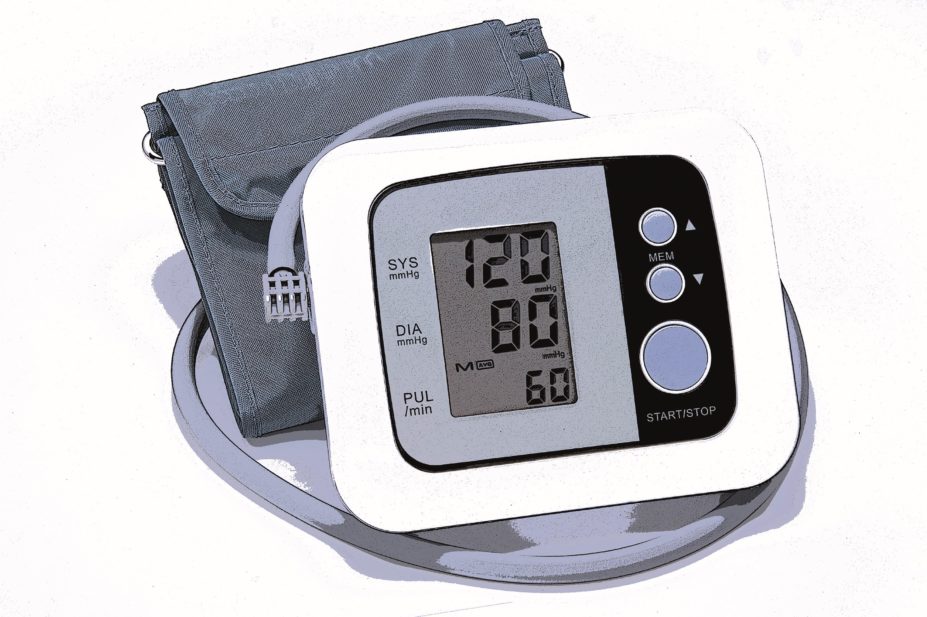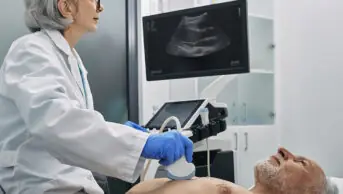
istockphoto.com
In September 2015, the National Institutes of Health (NIH) in the United States halted the major clinical trial Systolic Blood Pressure Intervention Trial (SPRINT) and issued a press release entitled: ‘Landmark NIH study shows intensive blood pressure management may save lives[1]
.’ This generated headlines around the world, even though supporting data for the trial’s key message — that lower blood pressure targets greatly reduce cardiovascular complications and deaths in older adults — was absent. The press release went on to say that “more intensive management of high blood pressure, below a commonly recommended blood pressure target, significantly reduces rates of cardiovascular disease, and lowers risk of death in a group of adults 50 years and older with high blood pressure[1]
.”
In November 2015, the details of SPRINT were published in the New England Journal of Medicine
[2]
. The study compared ‘intensive’ blood pressure lowering (targeting <120mmHg systolic) against standard therapy (<140mmHg) and the authors concluded that “SPRINT now provides evidence of benefits for an even lower systolic blood pressure target than that currently recommended in most patients with hypertension[2]
.”
The implications could be huge, even though the study authors acknowledge that lower rates of fatal and non-fatal cardiovascular events in the intervention arm needed to be weighed against increases in a range of adverse events, particularly cases of kidney failure[2]
. The big question posed by such a high-profile truncated study is this: are the results of SPRINT significant or important enough to change clinical practice guidelines on the treatment of ‘moderate’ hypertension?
Current clinical practice guidelines (The Eighth Joint National Committee [JNC 8]) in the United States say that “there is strong evidence to support treating hypertensive persons aged 60 years or older to a blood pressure goal of less than 150/90mmHg”[3]
but the question SPRINT tried to answer was whether a level lower than this — below 140 systolic — provides even more benefit in terms of mortality reduction and reduced rates of cardiovascular events. Essentially, should older patients be targeted to reduce their systolic blood pressures down to under 120?
There are several reasons why clinicians should be cautious in adopting SPRINT’s ‘lower is better’ mantra. These include the quality of media reporting (which is likely to drive unwarranted enthusiasm for the study’s main messages), the nature of truncated studies (which typically lead to overestimated treatment effects), and questions about how SPRINT’s conclusions compare with the body of existing systematic literature comparing “intensive” versus “standard” antihypertensive therapy[3]
.
Media reporting
The media messaging deserves attention because both prescribers and patients are influenced by the media, and SPRINT generated considerable media in the United States.
Time magazine
, Reuters and MedPage Today all ran stories on SPRINT of varying levels of reporting quality, but with some commonalities. For example, none of these outlets conveyed the absolute benefits and harms related to the intervention, a vital consideration for any patient wishing to intensify their antihypertensive regimen. Time reported the benefits of the intervention in relative terms (43% and 38% for deaths and heart failure, respectively) and the harms in absolute terms (1% or 2% for fainting, dizziness and falls), which is a recipe for misleading readers. Reuters appropriately questioned whether US hypertension guidelines needed to be changed straight away as a result of SPRINT’s conclusions, quoting at least one detractor who was concerned about the rates of kidney failure. The rate of acute kidney failure or kidney injury on the intensive therapy was 4.4% (2.6% in the standard group). MedPage Today included information about the financial conflicts of interest between the study’s investigators and pharmaceutical companies, albeit an incomplete list, which failed to note that the lead investigator, Jackson Wright, has recently reported consulting fees from Medtronic, CVRx, Takeda, Daiichi-Sankyo, Pfizer, Novartis and Take Care Health[4]
.
None of these stories reported the fact that the newest angiotensin receptor blocker, azilsartan (Edarbi), as well its combination with chlorthalidone (Edarbyclor), were donated by Takeda and Arbor Pharmaceuticals in the SPRINT study[5]
. It seems obvious that a halted study — and widely reported headlines — means that SPRINT’s study reprints will likely be used as marketing tools to support Takeda’s promotional campaign for these two drugs, as well as fortifying many other pharmaceutical companies who benefit from the ‘lower is better’ blood pressure meme.
Actual benefits versus harms
The biggest issue in the reporting of SPRINT was the lack of context in terms of benefits and harms. I calculated what the outcomes were per 1,000 patients, which gives us an easy way to compare numbers of who benefited versus who was harmed. For each 1,000 patients treated with the more intensive therapy, there were:
- 8 heart failures prevented;
- 6 deaths by cardiovascular causes prevented;
- 18 acute kidney injuries or renal failures caused;
- 10 cases of hypotension caused;
- 6 cases of syncope caused;
- 8 electrolyte abnormalities caused.
Overall, there were 12 deaths by any cause prevented for every 24 serious adverse events caused.
Potential problems
The issue of truncated trials was perhaps best described by Gordon Guyatt and colleagues in The BMJ who studied this phenomenon[6]
and concluded that the halting and rapid publication of studies, such as SPRINT, may lead to overestimates of treatment effects, wider media dissemination and quicker uptake into clinical practice guideline changes than if the trial was left to run its planned course. Given this, it is premature to consider changing current guidelines except if the new results radically changed what we already know about “intensive” versus “standard” therapy.
Comparing SPRINT with systematic evidence
One factor that was not highlighted in any of the media reports is that SPRINT is one study, and it is dangerous to look at a single trial in isolation. Clinicians and patients should consider how the results of SPRINT compare with other trials that have asked similar questions when comparing intensive versus standard treatment for blood pressure control. There is a body of evidence surrounding the “how low should we go?” question, which has been well examined by the Cochrane Collaboration’s Hypertension Review group, whose 2009 review stated that aiming for targets lower than 140/90mmHg did not result in overall benefits to patients[3]
. Examining data from seven trials in more than 22,000 people, the authors found that “using more drugs in the lower target groups did achieve modestly lower blood pressures. However, this strategy did not prolong survival or reduce stroke, heart attack, heart failure or kidney failure”.
On 23 November 2015, I interviewed one of the researchers on that review, Jim Wright — the head of the Cochrane Hypertension Review group based in Vancouver — and asked him if the SPRINT trial should make people change their minds about the desirability of lower blood pressure targets. “Definitely not,” he said[7]
.
Wright and his team are currently incorporating the new SPRINT data into the Cochrane Collaboration’s software to determine if the new trial data alters what the systematic reviews on the topic currently say. Wright focuses on those effects with life-threatening impact, such as total mortality and total serious events, which include hospital admissions and deaths, and he said the SPRINT trial “shows a decrease in total mortality and an increase in total non-fatal serious adverse events with lower targets[7]
.”
Wright says that when the SPRINT trial data is added to the nine other trials studying the same question, the combined data show no difference in death rates. In other words, the findings of this trial are an outlier and there is no overall evidence that the lower, intensive blood pressure target makes people live longer[7]
. These findings should be considered tentative pending publication of the full updated Cochrane review.
Although the writing groups of antihypertensive guidelines may be eager to incorporate the evidence from SPRINT and modify current recommendations for those patients in the ‘moderate’ category, the systematically reviewed evidence we currently have would suggest there is no need to sprint towards any drastic changes.
Alan Cassels is a drug policy researcher affiliated with the Faculty of Human and Social Development at the University of Victoria, British Columbia, Canada.
References
[1] National Institutes of Health. Landmark NIH study shows intensive blood pressure management may save lives. 11 September 2015.
[2] The SPRINT research group. A randomized trial of intensive versus standard blood-pressure control. New England Journal of Medicine 2015;373:2103–2116. doi: 10.1056/NEJMoa1511939
[3] Arguedas JA, Perez MI & Wright JM. Treatment blood pressure targets for hypertension. Cochrane Database of Systematic Reviews 2009, Issue 3. Art. No.: CD004349. doi: 10.1002/14651858.CD004349.pub2
[4] 2014 Evidence-based guideline for the management of high blood pressure in adults. Report From the Panel Members Appointed to the Eighth Joint National Committee (JNC 8).
[5] ICMJE form for disclosure of potential conflicts of interest. 15 October 2015.
[6] Guyatt G, Briel M, Paul Glasziou P et al. Problems of stopping trials early. The BMJ 2012;344. doi: 10.1136/bmj.e3863
[7] Personal communication with Jim Wright, coordinating editor of the Cochrane Hypertension Review Group. 23 November 2015.


